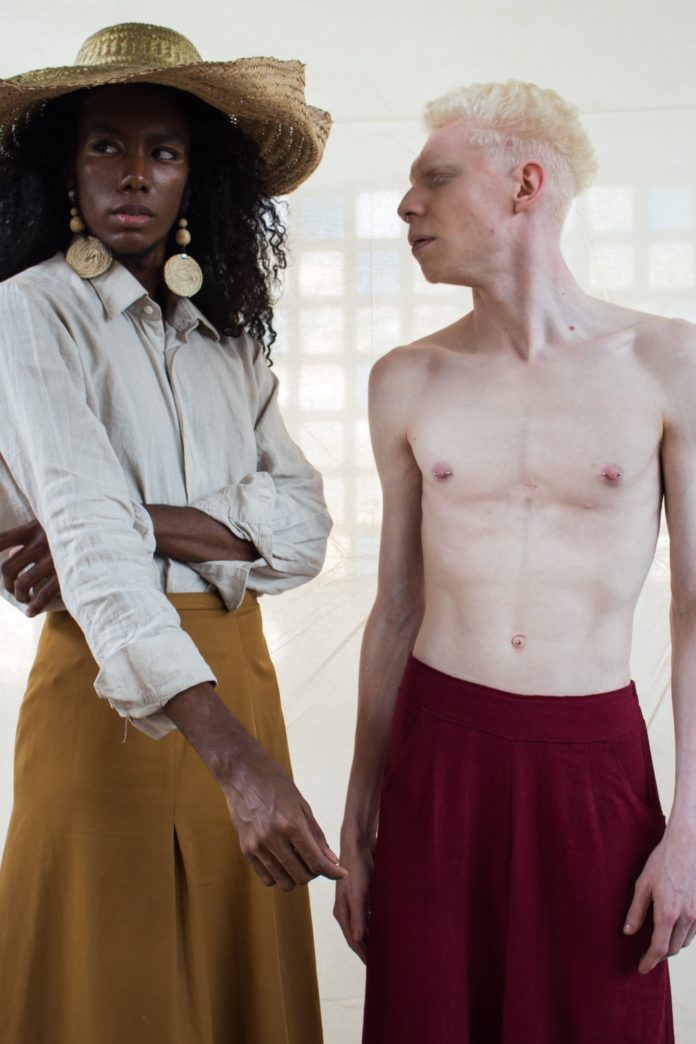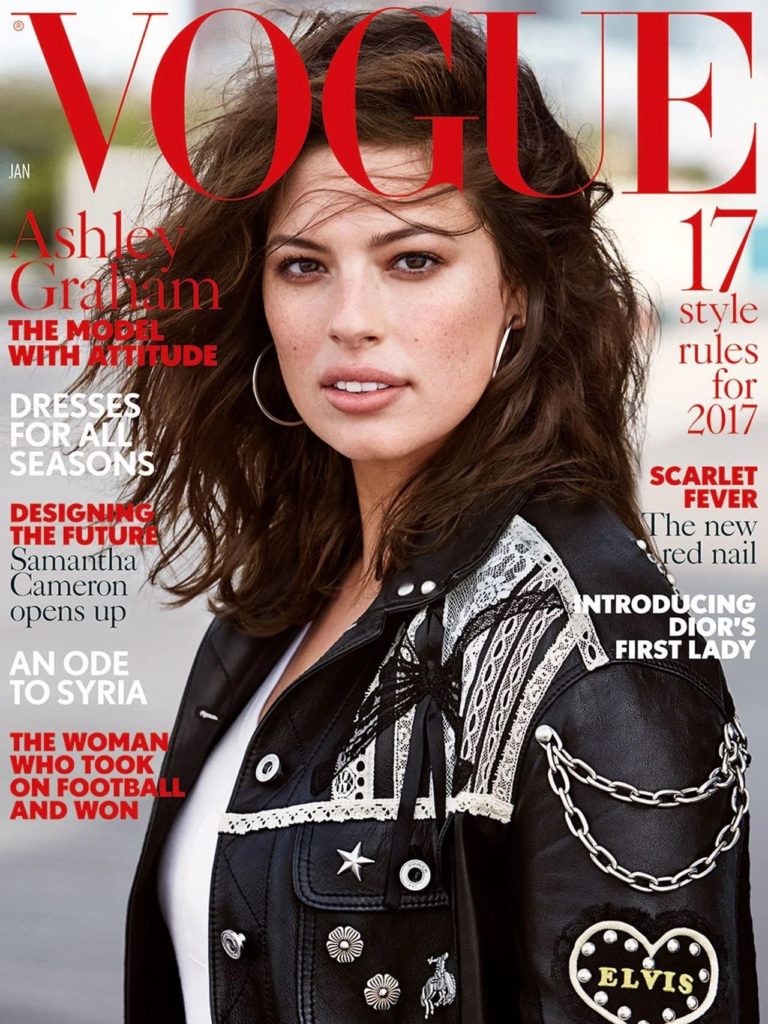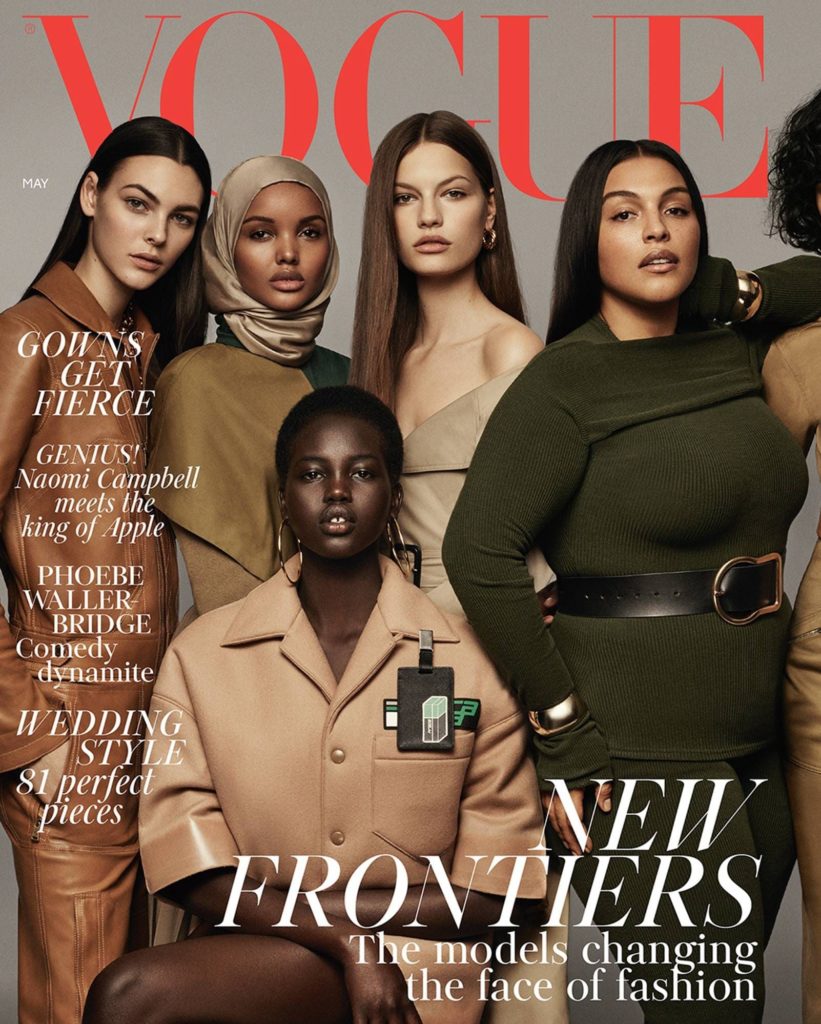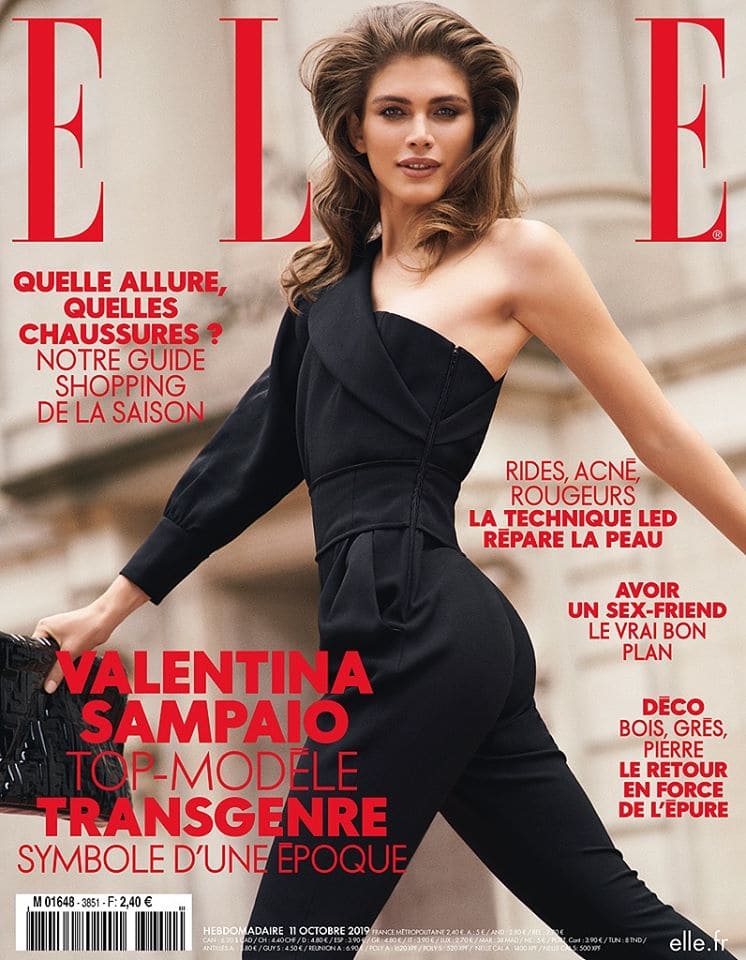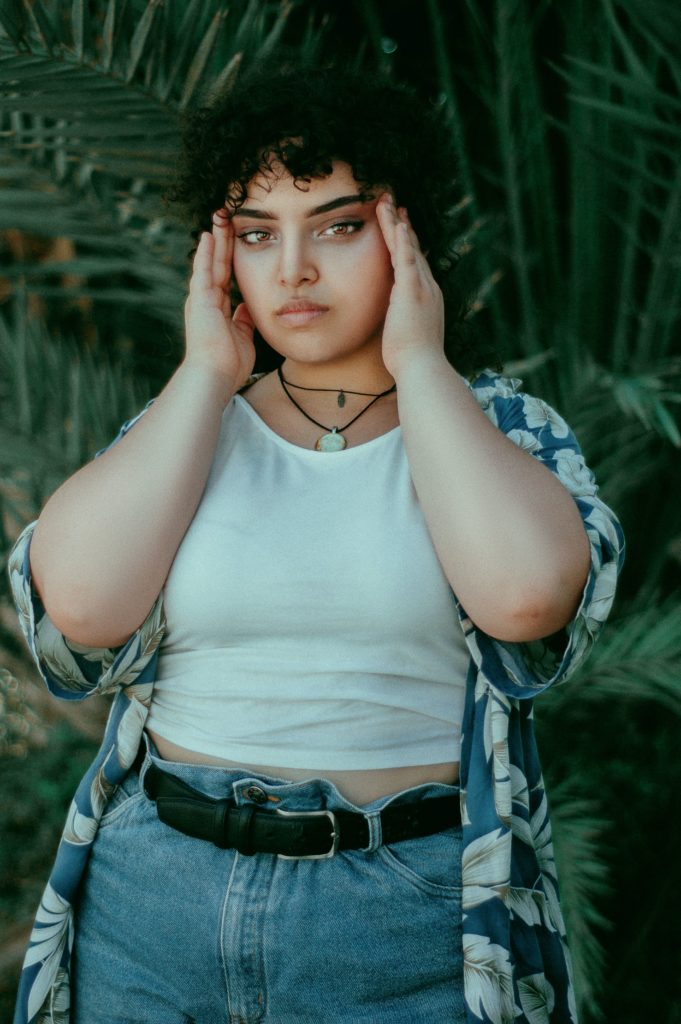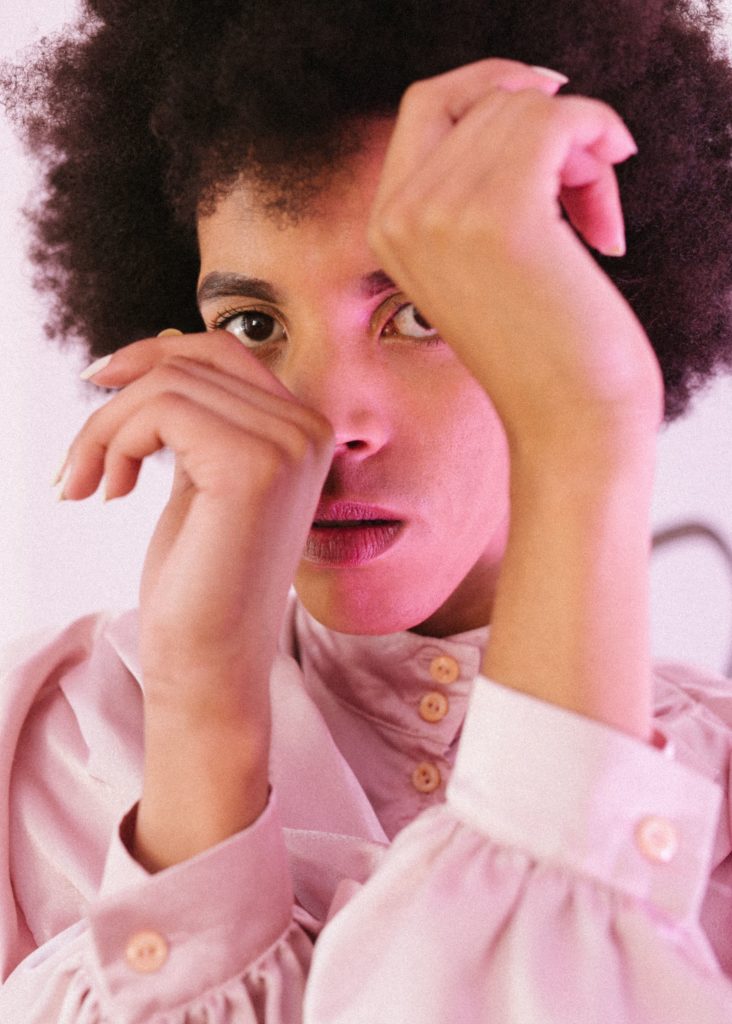“Diversity and inclusion are not a trend, but the way we should all be operating going forward.” This is how Steven Kolb, head of the Council of Fashion Designers of America (CFDA) started the Fashion Week of New York in January 2019. The call of such an organization for inclusion, whose role is to define an ethical code of practice in the world of American beauty, marks a real turning point in the valuing of new forms of beauty.
Fashion press plays a determining role in this evolution. In 2017 already, the plus-sized model Ashley Graham was on the cover of the British Vogue magazine. A way to encourage curvy women to be happy with themselves and to feel beautiful. In May 2018, the same edition was called : “New Frontiers”. New frontiers claimed by nine diverse models, with colored skins and kinky hair or with a hijab. A stark contrast with most publications featuring in majority white models.
Photos from Vogue UK (left and center) / Photo from “Elle” Magazine (right)
This diversity is especially put forward on podiums. If non-white models are now invited after such a long time in the world of haute couture, especially by Yves Saint Laurent since the end of the 1960s, the evolution of beauty standards is starting to become widespread. This opening allowed Winnie Harlow who has vitiligoLong-term condition where pale white patches develop on the skin.It is caused by the lack of melanin, which is the pigment in skin”. (Source : NHS) to lend her image to the brand Desigual, breaking the stereotypes about this skin condition.
The fashion industry has also been shaken by the coming of Valentina Sampaio who became a Victoria’s Secret’s model in August 2019. By being the first transgender “angel”, the Brazilian woman became a representative of this identity, which is subject to significant discrimination. In another significant example, L’Oréal chose to show Marie Bochet, an alpine ski champion, born with an arm malformation, during the Fashion Week in 2018 and 2019.
Nonconformity, a trend of the 21st century
Even if these few cases are far from rewriting the traditional diktats of fashion, diversity is appealing to recruitment agencies, which do not hesitate to take advantage of the digital tools that they have. That is the case of the international agency IMG Models, representing Gisele Bündchen, the Brazilian model who created the campaign “We Love Your Genes” in 2014.
The principle is simple: find unusual top models among Instagram users. By posting a picture with the keyword #WLYG, anyone can be spotted. Anyone ? Not really and that is the rub. Among the discovered Instagramers thanks to the campaign, there is a lack of different profiles. Except few colored women, most of the chosen ones have a slim, skinny and, all in all, very uniform physique.
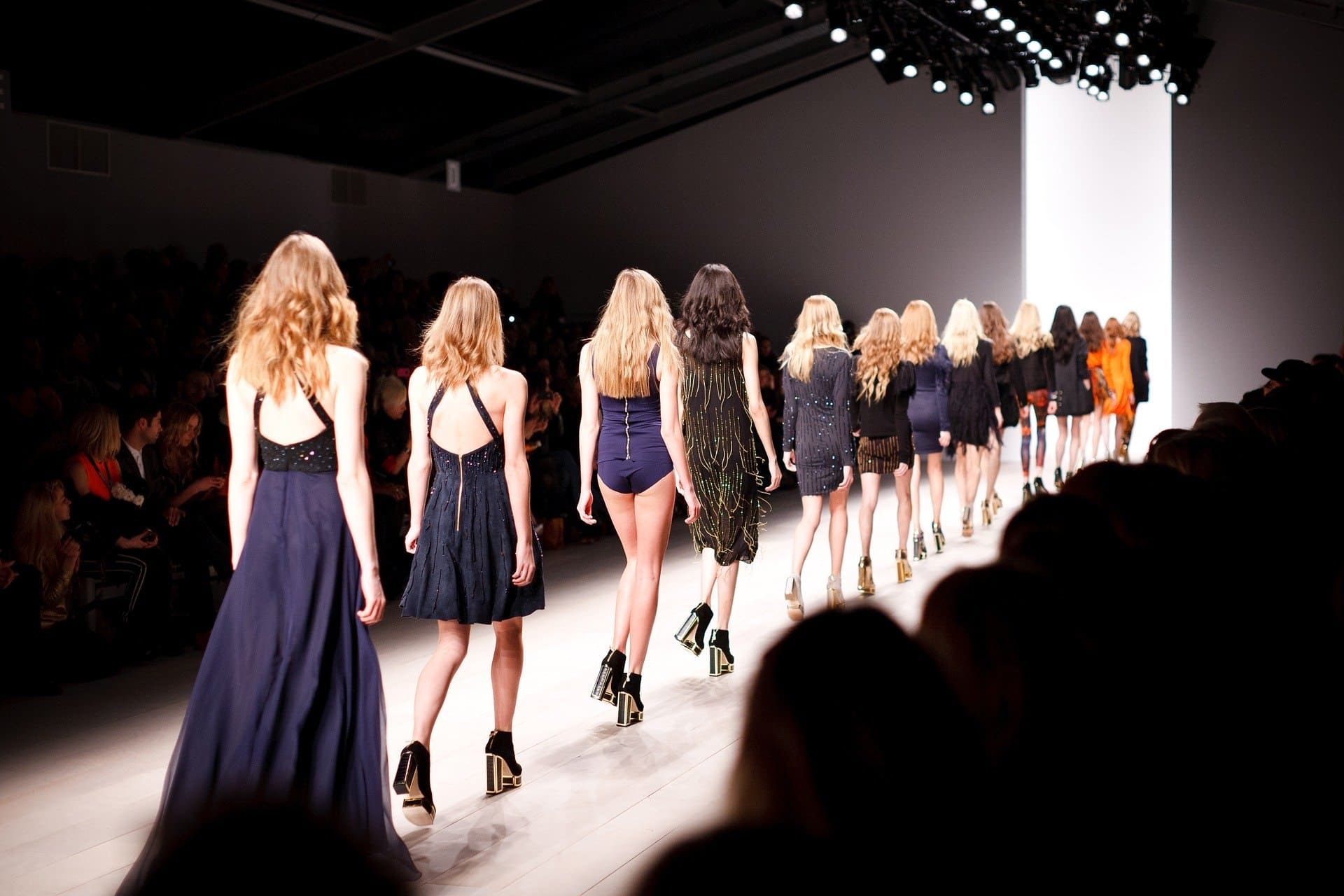
Photo by Pixabay
At the end of the day, do brands and agencies show real awareness, or do they just surf over the wave of nonconformity to give themselves a good image? The circumstances concerning the recent rising of Valentina Sampaio at Victoria’s Secret are raising doubts.
The transgender spokesmodel joined the American brand a few months after the controversial comments of Ed Razek, the marketing manager. In the columns of US Vogue, he said that the show should not include transgender “angels”. Those statements led him to resign after 36 years of good and loyal services. Valentina Sampaio comes at the right time to restore the image of Victoria’s Secret…
Beyond all the reputation aspect, inclusion is first and foremost a marketing strategy. Mathematically, reaching more individuals and communities sells more. Representing a larger ethnic diversity makes easy the access to international markets. It is a key step knowing that by 2024, the worldwide luxury market will be held by Chinese consumers up to 40% (A study of September 2018 from the Boston Consulting Group). Houses like Chanel with the South-Korean Soo Joo Park or Prada with the Chinese Fei Fei Sun have multiplied their partnership with Asian models, these last few years.
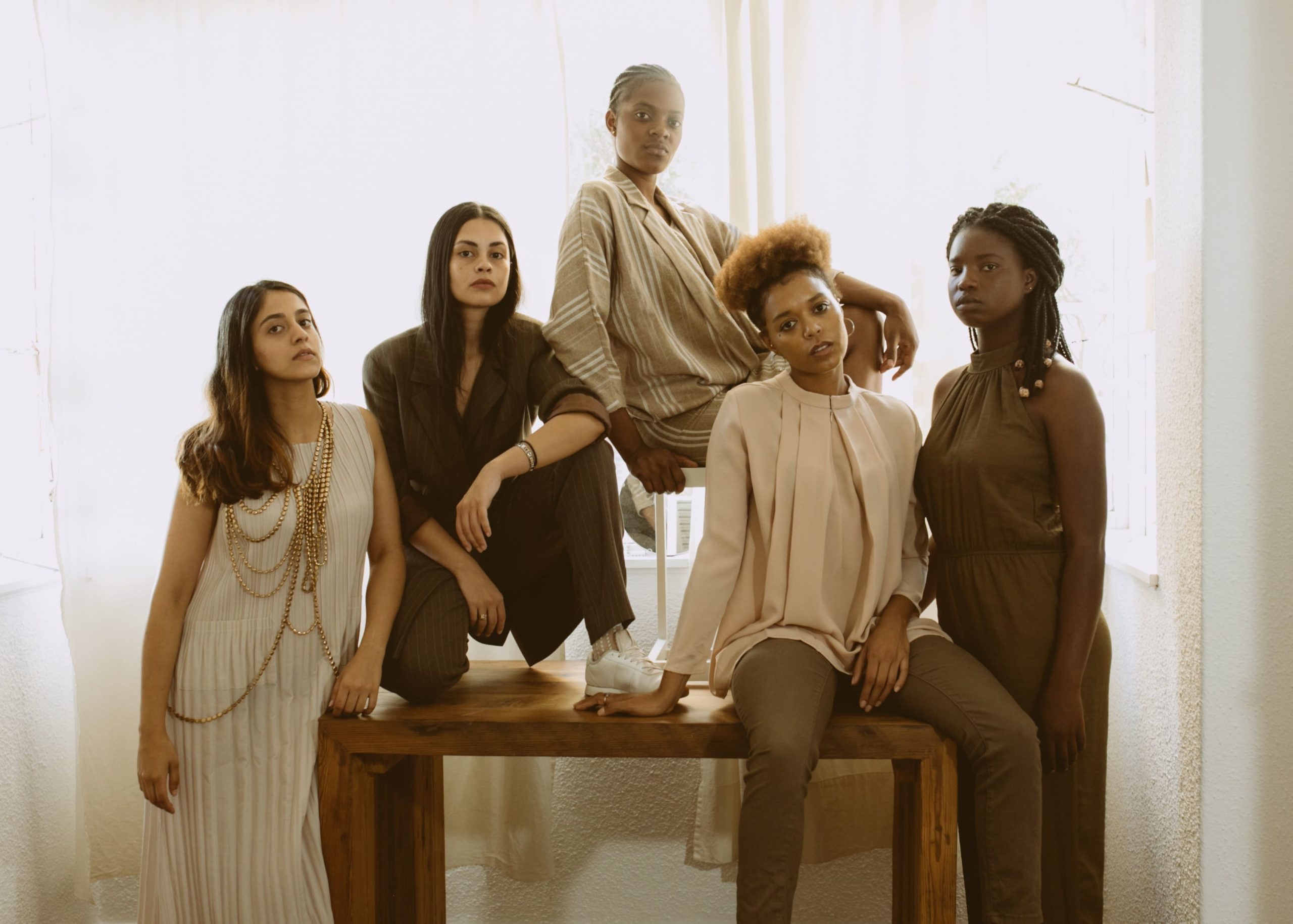
black women are 1.5 time more likely to buy a fashion product worn by a black model.
Photo by Retha Ferguson
Pernelle Marcon is a disabled model of the Wanted agency, specialized in unusual models. For her, big brands always look for their interest, but the importance is “the impact of marketing strategy on people: if [this strategy] does the least harm possible to people, then it is better”.
According to Doctor Ben Barry, professor at the Ryerson University of Toronto in Canada, the new multicultural generation of consumers buy more when their image is represented in commercials. Buyers would be asking for physiques that look like theirs. “There is certainly a marketing side”, admits Frédéric Monneyron, a sociologist who has among other things, studied body representations conveyed by fashion. It is therefore necessary to “meet the expectations of an increasingly diverse public”.
To this diversity is added what Pernelle Marcon describes as “fed up with the some bodies’ invisibility”. The French woman declares that social media make this exasperation more perceptible and cause more claims. “Fundamentally speaking, it is more of a sociological problem, adds Frédéric Monneyron. Beauty is the most unequal thing there is, and in this time where we are striving for equality in every aspect, it has almost become suspect.”
More than something “beautiful”, a new ideal
To meet this visceral need for equality, the fashion world is making models who no longer necessarily meet the traditional definition of “beauty” visible. But does that really question the canons of beauty? “My answer is no”, insists Frédéric Monneyron. “It is always the fineness that gives the aesthetic sensation. A beautiful face will always be a beautiful face, this will never change, it is mysterious. If we show 100 female faces, we might identify 10 of them as being beautiful faces: All over the world, everyone will agree, no matter their cultural level or origins.”
Thus, a redefinition of beauty would be impossible. Especially, concerning faces. As for the body, the sociologist is less categorical. Since antiquity, the ideal body has evolved a lot and has not always been ultra-thin, as we know it today.
Photo by Retha Ferguson (left) / Photo by Houcine Ncib (right)
If “beauty” does not evolve, mentalities do. Certainly in a shy way, but Frédéric Monneyron refuses to see it as a mere passing attraction. “Today, what we call body positivitySocial movement rooted in the belief that every human being should be accepted no matter their body shape. is spreading gradually. It is not only a trend, it is a fundamental trend “, he specifies. The specialist believes that we will “maybe have more and more models who don’t meet the current aesthetic codes”.
Because of the sociological changes of our time and the need for the public to identify with more realistic physiques, the evolution of beauty canons in models is a phenomenon that is not about to stop. Mischievous, Frédéric Monneyron simply explains that “in the world of fashion, fashion no longer belongs to beautiful people”, at least not to those considered as such by the conventions. Being beautiful would not be enough for future models.
Translated by Mélinda Moussinga
To discover the other articles of this series, click here…




